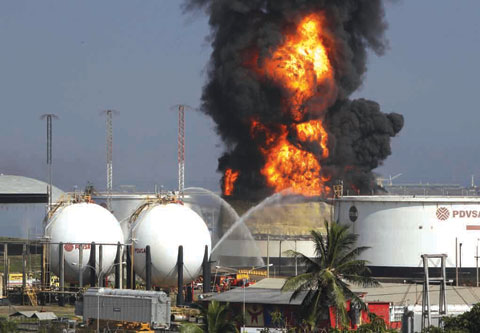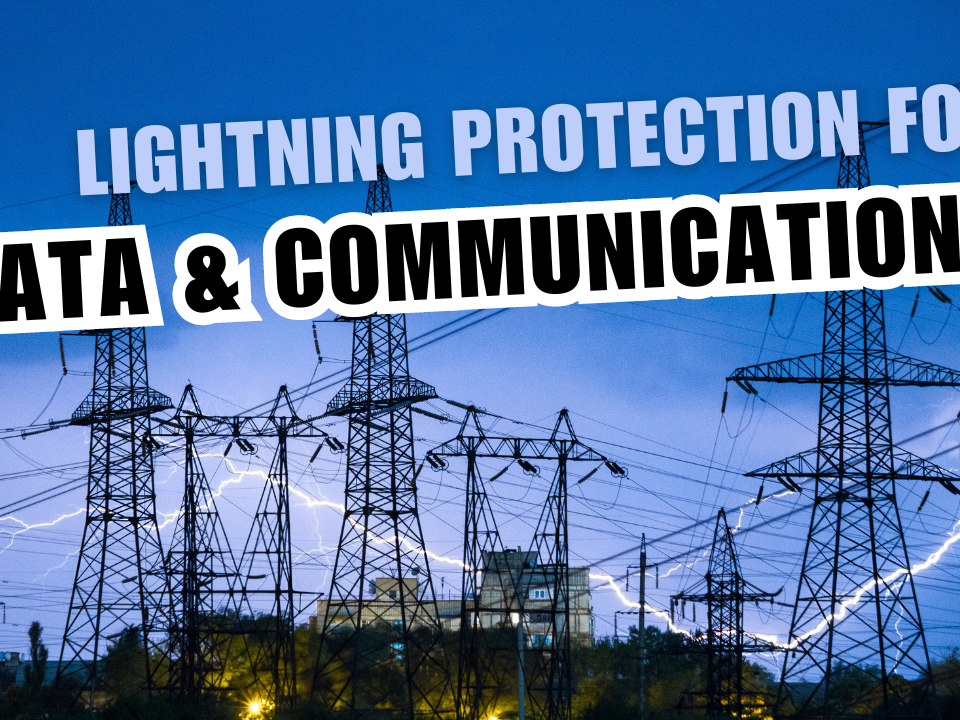- 100% AMERICAN MADE
- Lightning Protection - YOUR time, NOT Downtime
Functions Of A Grounding Rod
December 27, 2021LEC is a Fully Integrated Lightning Protection Provider
January 21, 2022Why Is Fuel Tank Lightning Protection Important?
A Floating roof tank (FRT) is a type of tank used for the storage of large amounts of petroleum products such as crude oil to allow any trapped gas within the oil to escape, as this stabilizes the crude oil.
The FRT has an open top which is equipped with a steel roof which moves up and down according to the level of the stored petroleum product in the tank.
The floating roof edge is rounded with a rim seal that has a function of preventing the flammable vapor of the stored product from escaping outside the tank and mixing with air, which helps to prevent fires from occurring.
The tank seal is made of flexible insulating materials of different designs.
Why is fuel tank lightning protection important?
Destructive lightning events do not need to be a direct strike to the tank itself. A nearby strike can create a massive voltage potential rise across the tank surfaces, including the shell and the floating roof.
Shunts were envisioned to permit any lightning-related current to propagate from the floating roof to the tank shell to ground without generating a spark.
Sadly, shunts are extremely unreliable and are not easily inspected except through a maintenance event.
This leaves the tank’s ability to safely conduct a lightning strike undetermined and ultimately with significant risk of fire.
Providing countermeasures to protect tanks from these vulnerabilities is simple and easily corrected.
The solution is utilizing RGA (Retractable Grounding Assembly)
Lightning Eliminators & Consultants Inc. has developed a roof-shell bonding mechanism (RGA) which is better than the conventional type of bypass conductor.
The RGA includes a spring to retract the conductors on the wheel. The length of the bypass conductor is always kept to the minimum length regarding the location of the floating roof at the top or the bottom of the tank.
Due to the large diameter of the floating roof tanks, and order to increase the electrical connection between the roof and the shell of the FRT, it is recommended to install multiple RGA’s on the floating roof tank.
The RGA should be installed at intervals no more than 30 m around the circumference of the floating roof.
The RGA is better than conventional cables and provides the optimal solution for fuel tank lightning protection.
Contact our lightning elimination experts for assistance in developing the optimum Fuel tank lightning protection solution for your company.



3 Comments
[…] Why Is Fuel Tank Lightning Protection Important? – Lightning Eliminators. A Floating roof tank (FRT) is a type of tank used for the storage of large amounts of petroleum products such as crude oil to allow any trapped gas within the oil to escape, as this stabilizes the crude oil. The FRT has an open top which is equipped with a steel roof which moves up and down according to the level of the stored petroleum product in the tank. The floating roof edge is rounded with a rim seal that has a function of preventing the flammable vapor of the stored product from escaping outside the tank and mixing with air, which helps to prevent fires from occurring. […]
[…] Why Is Fuel Tank Lightning Protection Important? – Lightning Eliminators. A Floating roof tank (FRT) is a type of tank used for the storage of large amounts of petroleum products such as crude oil to allow any trapped gas within the oil to escape, as this stabilizes the crude oil. […]
[…] Why Is Fuel Tank Lightning Protection Important? – Lightning Eliminators. A Floating roof tank (FRT) is a type of tank used for the storage of large amounts of petroleum products such as crude oil to allow any trapped gas within the oil to escape, as this stabilizes the crude oil. The FRT has an open top which is equipped with a steel roof which moves up and down according to the level of the stored petroleum product in the tank. The floating roof edge is rounded with a rim seal that has a function of preventing the flammable vapor of the stored product from escaping outside the tank and mixing with air, which helps to prevent fires from occurring. The tank seal is made of flexible insulating materials of different designs. Destructive lightning events do not need to be a direct strike to the tank itself. Shunts were envisioned to permit any lightning-related current to propagate from the floating roof to the tank shell to ground without generating a spark. […]